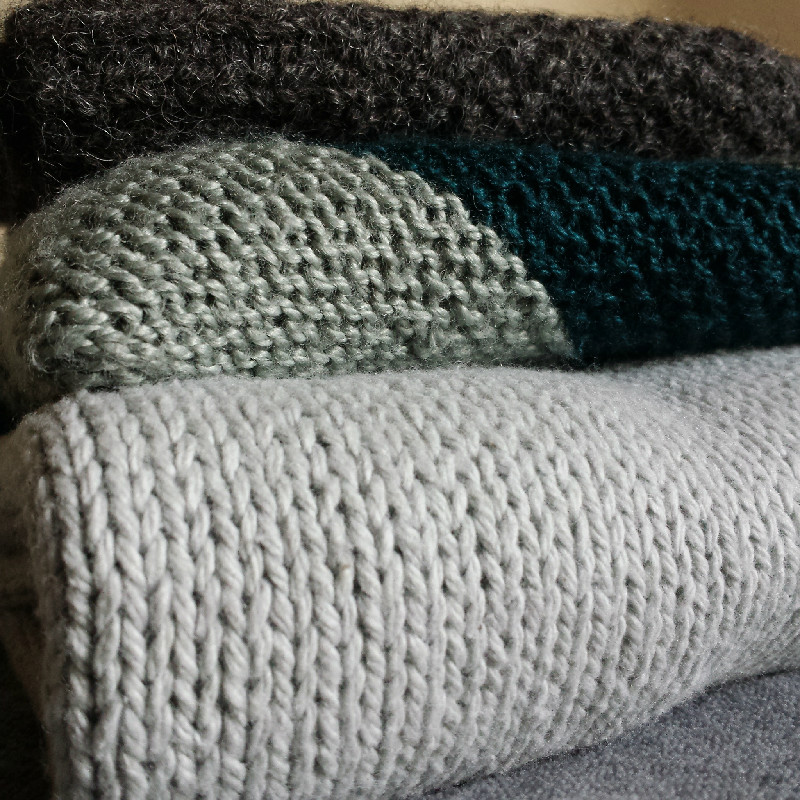Binding Off
Binding Off refers to the act of finishing stitches so that they will not unravel. It is a lot easier than it seems - you simply pass one stitch over the one right after it.
- Work the first two stitches to be bound off.
- With the left needle tip, carefully pull the first loop (the right-most one) over the second.
- Work the next stitch on the left needle.
Repeat steps 2 and 3 as many times as needed.
You can bind off all stitches by knitting or purling them. You can also bind-off “in pattern” continuing the stitch pattern as you bind the stitches off.
Weaving In Ends
Managing loose ends is one of the final parts of the knitting process. At the end of a project you will have at least two lengths of yarn that you need to weave in, or hide, in the stitches of your knitting. There are a lot of different ways to weave in ends, which one you use depends on what stitch pattern you are using. The type of yarn you are using can also influence which method you use, as some yarns are ’stickier’ than others and therefore, require less anchoring.
A blunt tapestry needle is the most common tool for this purpose, but you can also use a crochet hook. Try to leave a tail at least 6 -8 inches long so that you have something to work with.
Duplicate stitch (wrong side)
This method works well in most situations. It is usually hard to spot from the right side of the fabric. You mimic the stitches of the fabric to secure and hide the tail of yarn.
- First you want to pull the tail up through the nearest purl bump, it doesn’t really matter if you go left or right.
- Next, poke the needle tip down through the purl bump next to the one you just used and the purl bump below and between the two purl bumps.
- Now go back up through the neighboring bump and the one above it.
Repeat 2-3 until you think the tail is secure. Sometimes I like to jump down a row and work
back the other way to make it even harder for the tail to work itself out.
Break/cut the yarn, leaving a little bit of tail.
On the Diagonal
This one is more obvious on the wrong side and isn’t as ‘clean’ and the duplicate stitch.
.jpg)
.jpg)
- Poke the needle tip through every other purl bump on a diagonal. Pull the yarn through.
- Turn the needle back the way you came and poke the needle tip through the next set of purl bumps.
- Pull the yarn through.
Break/cut the yarn, leaving a little bit of tail.
Back to the topVertically
This method also works well on ribbing and is less noticeable than it would seem. You can also do it from the wrong side.
- Take the needle and go under and over the bars inside of the knit stitches (these are what you see as purl bumps on the wrong side). It should go over every other bar. Pull the yarn through.
- Now, take the needle tip and go through the side of the column and into the space between stitches. You can also just go into the next stitch, either will be fine.
- Just like you did in step one, weave the yarn over and under the bars in the stitches.
Repeat these steps until you feel that the tail is secure. Break/cut the yarn, leaving a little bit of tail.
Back to the top

.jpg)
.jpg)
.jpg)
.jpg)
.jpg)
.jpg)
.jpg)
.jpg)
.jpg)
.jpg)
.jpg)
.jpg)